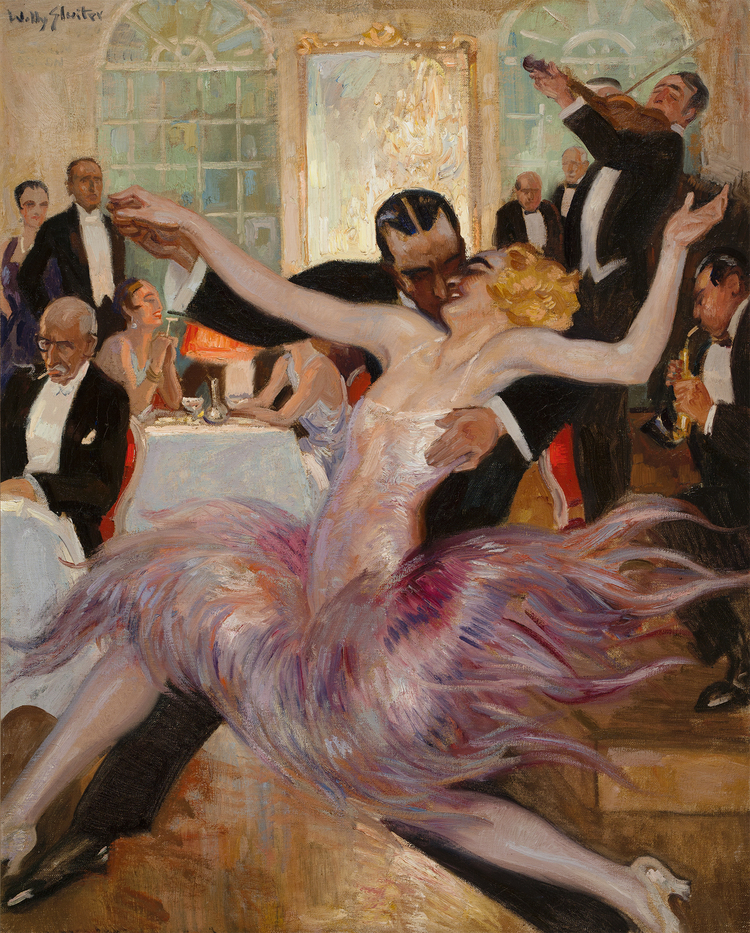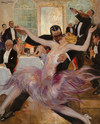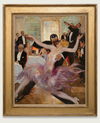J.W. (WILLY) SLUITER 1873 Amersfoort - 1949 The Hague Dancing Hall Hotel Adlon, Berlin
Oil / Canvas: 100 x 80 cm
- This artwork can be viewed in our gallery
- Call us for more information: +31 26 361 1876
- World wide shipping available
Details
In this painting, Willy Sluiter gives a wonderful depiction of the atmosphere in the most well-known hotel of Europe in the roaring twenties: Hotel Adlon in Berlin. The energetic painting shows a couple dancing wildly, probably the Charleston, the most popular dance of that time. Willy Sluiter was not just a talented painter who had become famous for his landscapes, beachscapes and portraits, but he also liked to depict the people and life around him in humorous sketches and water colours. Our painting also reflects the other side of his talent. It is exceptional that our painting has never been previously shown as it was acquired by the family who had bought it from Sluijter in that time.
Width: 80 cm
Over J.W. (WILLY) SLUITER
Willy Sluiter was schooled as a painter at the Dutch academies of Rotterdam and The Hague. The influence of the Hague School of painters is visible in his early landscapes and seascapes which also, however, show the influence of the Amsterdam impressionists. Around the turn of the century, Sluiter lived in Katwijk. There, he painted beachscapes and seascapes with fishers and their boats. In 1910 he moved to the artist’s village of Laren, where he painted farmer’s interiors in the Gooi and shepherds on heathland. He also spent much time working in Volendam in this period.
After Sluiter settled in The Hague in 1916, he increasingly focused on portraying the cosmopolitan lifestyle of high society. The fishers of Katwijk were replaced by beachgoers in what by then had become chic Scheveningen. He became a much-requested portrait artist and was furthermore successful in advertising, designing posters, illustrations and book covers. He also received orders from the Royal Family. His fame grew internationally, especially in England and America. He loved travelling through Europe, depicting high society. Willy Sluiter was always active in social life: he was member of Pictura in Dordrecht, Pulchri Studio in The Hague and Arti et Amacitiae in Amsterdam.
Willy Sluiter’s work can be viewed, among other places, in the Dordrecht Museum, the Katwijk Museum, Boijmans van Beuningen, the Rijksmuseum and Singer Laren.


